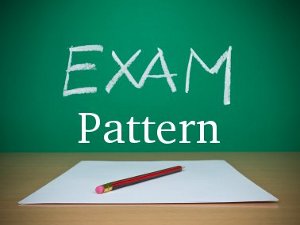CLAT 2020
Last date of application extended
- Due to lockdown the last date for application submission has been extended to 1st July 2020.
- The date of examination will be announced by 1st July giving students at least 21 days’ prior notice for the exam.
Exam Pattern revised:
- There will be only 1 paper of 150 marks with 150 questions having duration of 2 hours (120 minutes)
- There is 1/4th negative marking for every incorrect answer. (i.e. 0.25 marks will be deducted for incorrect answer).
- If question is left un-attempted no marks will be deducted.
Question Paper Format
| Maximum Marks | 150 |
| Duration of CLAT 2020 Exam | 02:00 Hours |
| Multiple-Choice Questions | 150 questions of one mark each |
| Negative Marking | 0.25 Mark for each wrong answer |
| Subject Areas with weightage: | (approximate number of questions) |
|---|---|
| English Language | 28-32 questions, or roughly 20% of the paper |
| Current Affairs, including General Knowledge | 35-39 questions, or roughly 25% of the paper |
| Legal Reasoning | 35-39 questions, or roughly 25% of the paper |
| Logical Reasoning | 28-32 questions, or roughly 20% of the paper |
| Quantitative Techniques | 13-17 questions, or roughly 10% of the paper |
SYLLABUS – CLAT 2020
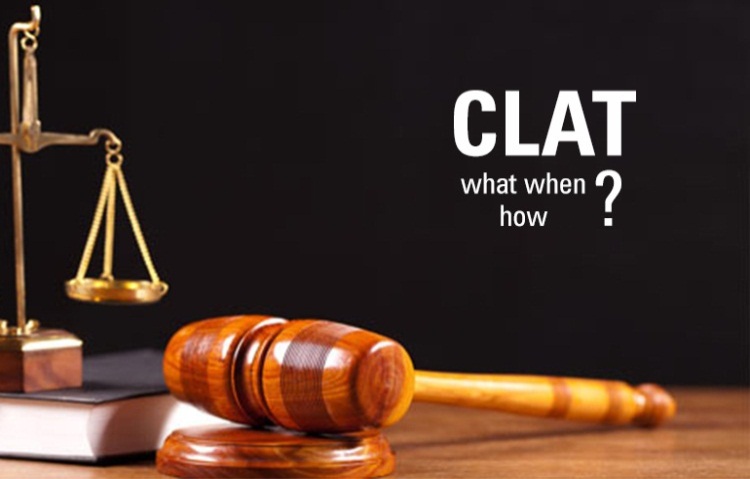
The Consortium of National Law Universities (the “Consortium”) announced certain modifications in the pattern of the Common Law Admission Test (the “CLAT”), 2020 in its Press Release of November 21, 2019.
This note describes the proposed pattern of questions for each of the five specified areas that the Undergraduate-CLAT 2020 (the “UG-CLAT 2020”) would comprise.
Introduction and Overview
The UG-CLAT 2020 would focus on evaluating the comprehension and reasoning skills and abilities of candidates. Overall, it is designed to be a test of aptitude and skills that are necessary for a legal education rather than prior knowledge, though prior knowledge occasionally may be useful to respond to questions in the Current Affairs section.
The UG-CLAT 2020 shall be a 2-hour test, with 150 multiple-choice questions carrying 1 mark each. There shall be negative marking of 0.25 marks for every wrong answer. These questions would be divided across the following 5 subjects:
- English Language
- Current Affairs, including General Knowledge
- Legal Reasoning
- Logical Reasoning
- Quantitative Techniques
English Language
In this section of the UG-CLAT 2020, you will be provided passages of about 450 words each. These passages will be derived from contemporary or historically significant fiction and non-fiction writing, and would be of a standard that a 12th standard student may be able to read in about 5-7 minutes.
Each passage will be followed by a series of questions that will require you to demonstrate your comprehension and language skills, including your abilities to:
- Read and comprehend the main point discussed in the passage, as well as any arguments and viewpoints discussed or set out in the passage;
- Draw inferences and conclusions based on the passage;
- Summarise the passage;
- Compare and contrast the different arguments or viewpoints set out in the passage; and
- Understand the meaning of various words and phrases used in the passage.
Current Affairs Including General Knowledge
In this section, you will be provided passages of up to 450 words each. The passages will be derived from news, journalistic sources and other non-fiction writing. The questions may include an examination of legal information or knowledge discussed in or related to the passage, but would not require any additional knowledge of the law beyond the passage.
Each passage will be followed by a series of questions that will require you to demonstrate your awareness of various aspects of current affairs and general knowledge, including:
- Contemporary events of significance from India and the world;
- Arts and culture;
- International affairs; and
- Historical events of continuing significance.
Legal Reasoning
In this section, you will be expected to read passages of around 450 words each. The passages may relate to fact situations or scenarios involving legal matters, public policy questions or moral philosophical enquiries. You will not require any prior knowledge of law. You will benefit from a general awareness of contemporary legal and moral issues to better apply general principles or propositions to the given fact scenarios.
Each passage would be followed by a series of questions that will require you to:
- Identify and infer the rules and principles set out in the passage;
- Apply such rules and principles to various fact situations; and
- Understand how changes to the rules or principles may alter their application to various fact situations.
Logical Reasoning
The Logical Reasoning section of the UG-CLAT 2020 will include a series of short passages of about 300 words each. Each passage will be followed by one or more questions that will require you to:
- Recognize an argument, its premises and conclusions;
- Read and identify the arguments set out in the passage;
- Critically analyse patterns of reasoning, and assess how conclusions may depend on particular premises or evidence;
- Infer what follows from the passage and apply these inferences to new situations;
- Draw relationships and analogies, identify contradictions and equivalence, and assess the effectiveness of arguments.
Quantitative Techniques
The Quantitative Techniques section of the UG-CLAT 2020 will include short sets of facts or propositions, graphs, or other textual, pictorial or diagrammatic representations of numerical information, followed by a series of questions. You will be required to derive information from such passages, graphs, or other representations, and apply mathematical operations on such information.
The questions will require you to:
- Derive, infer, and manipulate numerical information set out in such passages, graphs, or other representations; and
- Apply various 10th standard mathematical operations on such information, including from areas such as ratios and proportions, basic algebra, mensuration and statistical estimation.
Preparing for the UG-CLAT 2020
The Consortium plans to publish various preparatory materials for the UG-CLAT 2020, including:
- Guides to the question paper and sample questions;
- Model question papers; and
- Instructional materials and exercises for each of the subjects that the UG-CLAT 2020 comprises.
The Consortium will also provide candidates who have successfully completed their application to the UG-CLAT 2020 access to a learning platform where you may access the preparatory materials described above, as well as your scores on various exercises and model question papers.
In addition, you should develop your capacity to read and understand bodies of text, ensure you stay abreast of news and current affairs by regularly reading quality newspapers and periodicals, and improve your speed of answering questions on quantitative techniques by practising with materials such as 10th standard mathematics textbooks.
Eligibility Criteria
- There will be no upper age limit for UG Programme in CLAT 2020.
- As regards minimum percentage of marks in the qualifying examination (i.e., 10+2 or an equivalent examination), the candidates must have secured:
- Forty five percent (45%) marks or its equivalent grade in case of candidates belonging to General / OBC / PWD / NRI / PIO / OCI categories
- Forty Percent (40%) marks or equivalent in case of candidates belonging to SC/ST categories.
- Candidates who are appearing in the qualifying examination in March/April, 2020 are also eligible to appear in CLAT 2020 examination. However, they shall be required to produce an evidence of their passing the qualifying examination at the time of admission, failing which they shall lose their right to be considered for admission.
- The result of the qualifying examination (i.e., 10+2) shall be submitted by the candidate at the time of admission failing which the candidate shall be ineligible for admission to the Course.
- In case of equal marks, the break of tie shall be by the following procedure and order as under:
- Higher marks in the component / section on legal aptitude in the CLAT 2020 exam;
- Higher age;
- Computerised draw of lots.
How to fill CLAT application form 2020?
Step- 1: Register Online
- Visit the official site. (Link is provided here)
- Read the information & click on Apply Online.
- Register yourself with required details.
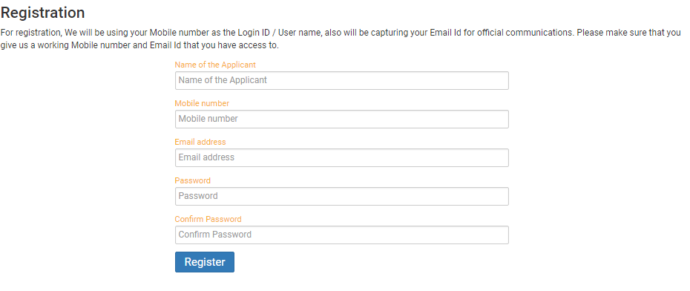
- Read the Information carefully, Fill your details and click on Register
Step- 2: Login to Application Form
- The candidates have to login with their user ID and password.
- Read all the entries carefully.
- Click on the “Next” button.
Step- 3: Upload Images
Photograph:
- The photograph should be a recent passport size with name and date.
- Photograph should be colored with clear background (prefer white background).
- It should be a scanned image in jpg or jpeg format.
- Dimensions 200 x 230 pixels (preferred).
- The file size should be more than 20KB and less than 50 KB.
- Caps, hats and dark glasses are not acceptable. Religious headwear is allowed but it must not cover your face.
Signature:
- Signature should be done only by the candidate as it may be checked any time.
- The applicant has to sign on white paper with Black Ink pen.
- Dimensions 140 x 60 pixels (preferred).
- Size of file should be between 10KB – 20KB.
- Scanned image in jpeg/jpg format.
Step- 4: Enter Details
- The candidates have to login their application form with their user ID and password.
- The candidates have to fill all the details which are asked in the application form such as:
- They have to fill their personal details category/gender, address etc.
- Click on save and next.
Step 4.1: Enter Qualification Details
- Enter year of qualifying exam passing or appearing.
- Enter board or university name.
- Click on save & next.
Step 4.2: Choose Preferences for NLUs
- Choose the NLUs as per your preference.
- Click on save and next.
Step- 5: Preview & Final Submit
Candidates should preview the application and then make it final submit.
Step- 6: Pay Application Fee
- Click on the link ‘pay exam fee’.
- Select the payment mode, i.e. debit/credit card, net banking or bank challan.
Step- 7: Print Confirmation Page
- Click on the link ‘Click here to take print out of confirmation page’.
- The confirmation page will be open on the screen.
- The candidates can take print out of the confirmation page for future use.
Note: A candidates must remember his/her CLAT USER ID & password. The USER ID & Password helps the students to see the status of their application form, download the admit card and know the results.
If you have any doubt regarding How to Fill CLAT 2020 Application Form call or whatsapp: 9004078746 or email: youngias.aashah@gmail.com
How to apply / Important Instructions
Important Instructions
- The online enrollment for CLAT 2020 is open from 1st January 2020 and now extended till 1st July 2020 (due to lockdown).
- The applications has to be submitted ONLINE only from consortiumofnlus.ac.in website.
- The CLAT 2020 examination will be held in the month of July 2020 as and when the date is announced.
- The CLAT 2020 examination will be held in OFFLINE mode
- The candidates are first required to register themselves at the CLAT 2020 website by using personal mobile number and e-mail Id. Upon registration, an OTP will be sent to the given mobile number for validation. Once your mobile number is validated, you can login using your mobile number and the password you provided at the time of registration.
- Please fill the form carefully. The Name of the candidate and the parents should be spelt correctly in the application as it appears in the Certificates/Mark sheets/Identity proof. Any change/alteration found may disqualify your candidature.
- No alteration/editing in the online application form can be done after successful submission/final submission of the form. The information once furnished by the candidate with regard to the category to which the candidate belongs, the preference for the NLUs and the Centre of the Entrance Test submitted by the candidates through online application mode shall be final and no change whatsoever, shall be allowed thereafter under any circumstances.
- The candidates are required to read the instructions carefully and furnish correct and authentic information. In case the information furnished at any stage of the application, examination and admission process is found to be false or incorrect or if there is any discrepancy or mismatch between the information furnished by the candidate at the relevant section and the certificates/documents produced at the time of admission, the provisional admission offered to the candidate shall stand cancelled with immediate effect without assigning any further reason and the candidate shall stand disqualified from being considered for further admission to the NLUs by the CLAT Consortium Office.
- The candidate shall fill his/her preference order for all 22 NLUs at the time of online application itself. No change shall be allowed in the preference once the form is submitted by the candidate.
Documents to be uploaded with the Online Application.
- Front facing passport size recent photograph with plain background
- Signature of the candidate
- Category certificate if you are applying under SC/ST/OBC
- Relevant certificate issued by competent authority if you are applying if candidate is P.W.D
- Relevant certificate issued by competent authority if you are coming under BPL category
NOTE:
- The original certificates/documents issued by the competent authority as specified in the brochure are to be submitted to the allotted University in the form and manner as specified by the respective universities at the time of admission.
- The photograph and signature of the candidate need not be attested while submitting the Online Application Form.
- All documents/certificates should be uploaded in pdf format only.
Application Fee
- Application fees can be paid only online.
- Application fee for General/OBC/PWD/NRI/PIO/OCI candidates : Rs.4,000/-
- Application fee for SC/ST/BPL category candidates: Rs.3,500/-
- The cost of previous years’ question papers is Rs.500/- (not included in the CLAT 2020 application fee of Rs.4,000/- or Rs.3,500/- as the case may be.)
- The candidates themselves will have to bear the bank transaction charges for remitting the fee online. The actual bank transaction charges will be displayed in the payment gateway page after you choose the mode of payment.
- Application Fees is non-refundable.
Other instructions
- Indian Nationals/NRIs/PIO/OCI seeking admission in either of the UG programmes shall appear in CLAT 2020.
- Foreign Nationals need not appear for the test
- The application form, complete in all respects and after payment of fees must be finally submitted on or before 31st March, 2020 (11:59 P.M.). Incomplete application forms shall not be considered. The candidates shall fill and submit the application form well in time to avoid last minute hassles. The CLAT Office or the organizing University shall in no case be responsible for any incomplete information or misinformation or inconvenience faced by the candidate in this regard.
- For any information relating to the 22 NLUs, the candidate may refer to the e-brochure of the respective Institutions available in the Consortium website.
- For NRI/Foreign National seats, the applicants are advised to refer to the e-brochures as well as the websites of the respective NLUs for more details. All NRI Category candidates have to appear for the CLAT 2020 examination for those NLUs where such category is admitted through CLAT 2020 rankings and not admitted directly by the concerned Universities.
Admit Card/Hall ticket
- The Admit Card/Hall ticket can be downloaded by the candidate by logging into his/her account. The exact date on which the hall tickets will be made available will be intimated on the website.
Other Important Instructions for the Candidates
- Information regarding the details of intake, reservation policies and the courses offered along with the fee structures of various participating National Law Universities is available in the Information Brochure which can be accessed from the official website of CLAT and also from the websites of the participating NLUs. The candidates are, therefore, advised to thoroughly go through the rules, policies and the fee structure of the participating NLUs before filling in the application form for UG courses, and also for the NRI and Foreign National seats.
- Information provided in the e-Brochure regarding the intake, reservation policy, fee, courses offered and the subjects taught at various levels including the areas of specialization, etc., has been specified very briefly. For detailed information regarding the same, the candidates may refer to the information available at the websites of the participating NLUs.
- In the event of unforeseen incidents resulting in the cancellation of a Test city or centre, or insufficient or extra number of candidates opting to appear from a particular Test Centre, the Convenor, CLAT 2020 reserves the right to cancel such a City/Centre and shift the applicant to another City/Centre
- In order to claim the benefit of reservation, the candidate must produce the relevant certificates as prescribed by the Government of India/State Government and as required by the respective NLU at the time of admission, as notified by them.
- The CLAT 2020 application fee is non-refundable and non-adjustable.
- Participating National Law Universities reserve the right to change the total number of seats and break-up of seats as per their policy before the final allotment. The reservation policy is subject to change as decided by the concerned Government from time to time.
- If a candidate has filled-in more than one online application form, the candidate’s last online application form only will be considered. In such cases, the application fee for the previous application forms will not be refunded.
- The allotment of seats and the offer for admission under CLAT 2020 shall be provisional and shall not create any right of admission in favour of a candidate.
- Candidates are advised to visit CLAT 2020 website regularly for updates
* List of National Law Universities?
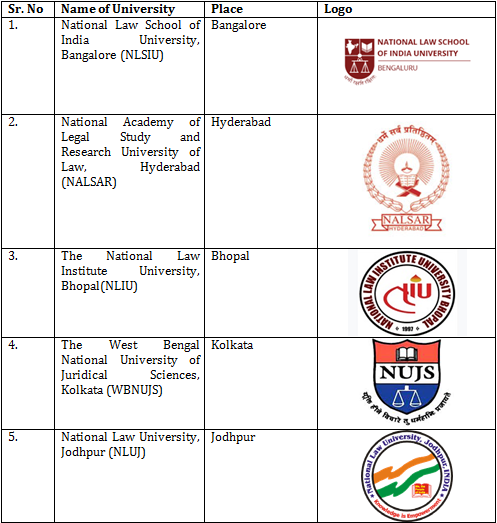
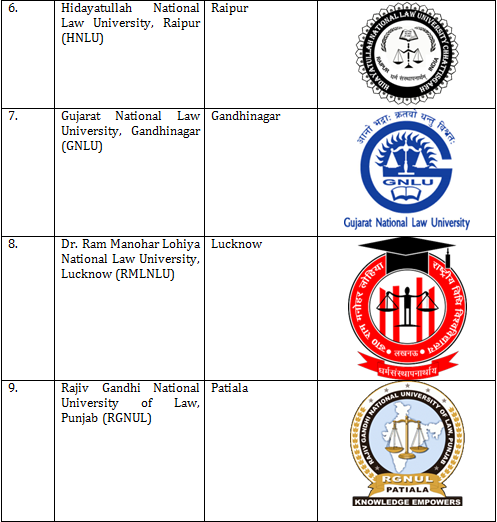
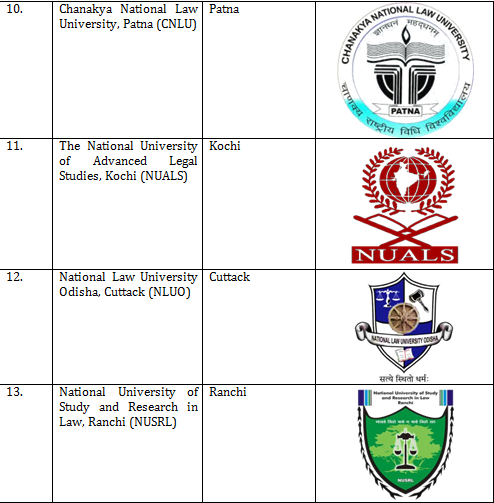
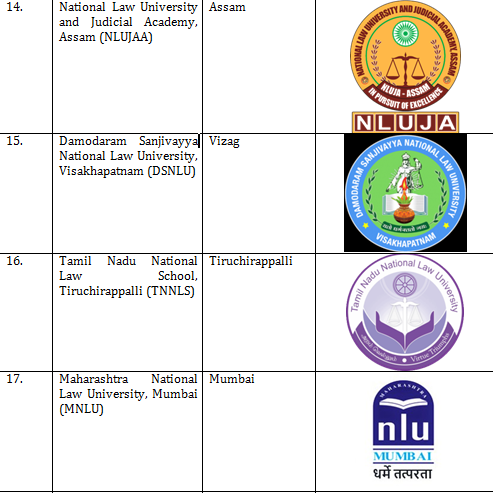
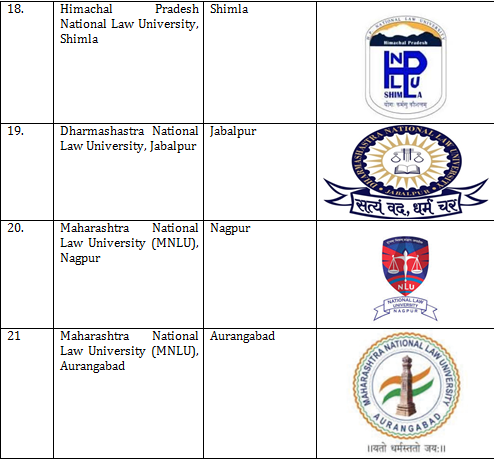
Practice Papers
Sample Paper – 1
Sample Paper – 2
Sample Paper – 3
Previous Years Question Papers
As the exam pattern for 2020 has been changed / revised, the previous years question papers (which are of old pattern) are not presently uploaded here. But the same will be made available soon.
CLAT Prospectus
* Why career in law is one of the best options?
The ambition to enter profession of law is usually drawn from inspiration either from non-fictional personalities (e.g. family members, friends) or some fictional personalities (Bollywood actors as lawyers, for eg., Amitabh Bachchan (Pink), Akshay Kumar (Rustom), or characters from novels such as Rudy Baylor/Atticus Finch, etc.); or from the belief that ONE PERSON CAN MAKE A DIFFERENCE.
There are several advantages of taking up Law as a profession. All that is to be done is to prepare for LAW entrance exams and join a good, reputed Law college. Considering the following advantages, one should be clear that why he/she should opt for law. These are:
1. It inculcates leadership qualities:
Nowadays lawyers aren’t just taught the tenets of law, they are taught how to be a good leader and how to lead the world. The ability to make decisions based on facts and reasoning, rather than emotions, is an integral part to success in the profession of law and holds even more value out of the court room. A great leader has the ability to make the hard choices putting the interests of his client first.
2. Plethora of choices:
It is the thing of the past that a Lawyer had to choose a career in either Criminal or Civil. Nowadays a Law Graduate has a lot of options to choose from mainly;
- Litigation – Criminal Laws, Civil Laws, Taxtion, Corporate, Commercial, Mediation, Human Rights, Intellectual Property Rights, Environment, Cyber, Intellectual Property (Trademarks, Copyrights, Patents) and many more.
- Law Firms – Corporate advisory, Mergers & Acquisitions, Tax Practice, Litigations.
- Chamber Prctrice – In-house counselling
- Others – Judiciary, Civil Services, Teaching, Legal Journalism etc.
3. Placements:
Students of top Law Colleges don’t have to go for job hunting, as there are appropriate opportunities that will seek them out. Every year the best law firms in the country and top Corporate Houses set placement targets for their HR teams, with hefty packet, to ensure that they do not miss out on the top talent in the country.
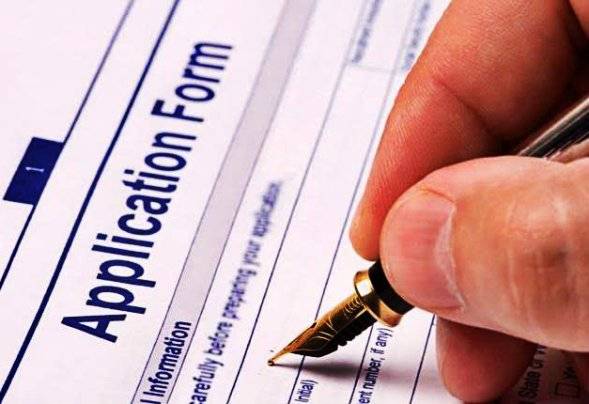
* What are the Law Entrance Exams?
What is CLAT?
The Common Law Admission Test (CLAT) is conducted every year by one of 21 National Law Universities in India on rotating basis for admitting students in these universities.
What is LSAT India?
The Law School Admission Test (LSAT) is an integral part of law school admission in the United States, Canada, and a growing number of other countries. The LSAT is designed specifically to assess key skills needed for success in law school, including Reading, Comprehension, Analytical Reasoning, and Logical Reasoning.
What is AILET?
AILET stands for All India Law Entrance Test and CLAT stands for Common Law Admission Test. AILET and CLAT both are the two most sought-after law entrance exams of the country.
What is DU LLB?
University of Delhi, on behalf of its Faculty of Law conducts Delhi University LLB Entrance Test, commonly known as DU LLB Entrance.
What is MAH-LLB?
State Common Entrance Test Cell of Government of Maharashtra conducts entrance test MAH-LLB for admission in law courses.
What is BHU-UET?
BHU Law Entrance Exam is a university level examination organized by the Banaras Hindu University (BHU).
What is AIBE?
AIBE, also known as All India Bar Examination, is an assessment test conducted at national level by Bar Council of India for the candidates who hold an LLB degree from recognized Law institution for their enrolment at Bar to enable them to practise law in the Courts in India.
* Eligibility for CLAT
1. There will be no upper age limit for undergraduates (UG) Programme in CLAT.
2. As regards minimum percentage of marks in the qualifying examination (i.e. 10+2, HSC or an equivalent examination), the candidates must have secured:
- Forty five percent (45%) marks or its equivalent grade in case of candidates belonging to General/OBC/ PWD/NRI/ PIO/OCI categories
- Forty Percent (40%) marks or equivalent in case of candidates belonging to SC/ST categories.
3. Candidates who are appearing in the qualifying examination in March/April are also eligible to appear in CLAT examination. However, they shall be required to produce an evidence of their passing the qualifying examination at the time of CLAT Admission Procedure, failing which they shall lose their right to be considered for admission.
4. The result of the qualifying examination (i.e., 10+2, HSC) shall be submitted by the candidate at the time of admission failing which the candidate shall be ineligible for admission to the Course.
5. In case of equal marks, the break of tie shall be by the following procedure and order as under:
-
- Higher marks in the component /section on legal aptitude in the CLAT exam;
- Higher age;
- Computerised draw of lots.
Provided that applicants who have obtained 10+ 2 Higher Secondary Pass Certificate or First Degree Certificate after prosecuting studies in distance or correspondence method shall also be considered as eligible for admission in the Integrated Five Years course or three years’ LL.B. course, as the case may be.
Explanation: The applicants who have obtained 10+2 or graduation / post-graduation through open Universities system directly without having any basic qualification for prosecuting such studies are not eligible for admission in the law courses.
* Is there any age limit for CLAT?
- There is no upper age limit set for appearing in the examination.
- Thus, candidates of all ages are eligible to appear for the law entrance examination.
* Who conducts CLAT?
There are 21 National Law Universities (NLU) in India (For list of NLU see bck-inside cover). For admitting students in these universities The Common Law Admission Test (CLAT) is conducted every year by these universities on rotating basis.
* Where is Maharashtra National Law University, Mumbai (MNLU) situated?
Maharashtra National Law University Mumbai is situated at MNLU CETTM Campus, MTNL, Hiranandani Gardens, Powai, Mumbai – 400 076
* What is the ideal time to start preparation for CLAT?
The ideal time to start preparation for CLAT (UG) is after your 10th Board Exam so that you are appropriately ready for CLAT after your 12th HSC Exam. So you will have almost 2 years to prepare for the exam. Hence the duration between your 10th Board Exam and 12th Board Exam is ideal for the preparation of CLAT (UG) so that you will have an edge over other candidates in the examination.
* Is there any prohibition for admission in law courses?
No student shall be allowed to simultaneously register for a law degree program with any other graduate or postgraduate or certificate course run by the same or any other University or an Institute for academic or professional learning excepting in the integrated degree program of the same institution.
Provided that any short period part time certificate course on language, computer science or computer application of an Institute or any course run by a Centre for Distance Learning of a University however, shall be excepted.
* Is it advisable to start preparation for CLAT after 12th HSC Board Exam?
You should prepare for 12th and CLAT simultaneously. As after your Board exam you will not get much time to prepare for the CLAT. You can apply for CLAT entrance exam after 12th as it is for 5 year integrated law course. CLAT exam is conducted once in a year and so your preparations must be good enough to get the admission in top NLU the same year so that you don’t have to wait for another year.
* Is it possible to manage Junior College academic with CLAT preparation?
With proper guidance and time management one can definitely manage academic studies with CLAT preparations.
* Is necessary / compulsory to go for Art after 10th SSC, if i plan to join law course after 12th?
Opting for Arts after 10th SSC is neither necessary nor compulsory if you are planning to join law course after your 12th. Students can opt for law course irrespective of their streams, Arts, Commerce or Science.
* The best CLAT coaching in Mumbai for 10th, 11th, 12th appeared students
A A Shah’s Young Lawyer with experience of training students for scholarship and competitive examinations for more than 10 years is the ideal place for online as well as offline courses for CLAT.
“A A Shah’s” is known for its sincere and dedicated approach in guiding, training and coaching its students. Having team of experienced faculties and track record of completion of syllabus with proper revision and tests, A A Shah’s has emerged as a trand setter, starting from UPSC – Civil Services Exams to school level scholarship Exams.
After looking into the plight of students aspiring for law courses and their exploitation by so-called big coaching classes, “A A Shah’s” has started Law Entrance Courses for CLAT and Mah-LL.B 5 Years CET for 10th, 11th, 12th appeared students, with aim to provide the best coaching with personal attention and full support till the student gets admission in NLU/College of his/her choice.
Contact at +91-9004078746
Registration for Free Guidance
All parents and students of Std. 10th (SSC) appeared and above, who are interested in knowing further details about career in law, may register.
Download Mobile App. Click https://play.google.com/store/apps/details?id=com.youngias.aashah
Why to join A A Shah’s Young Lawer when there are many other coaching classes?
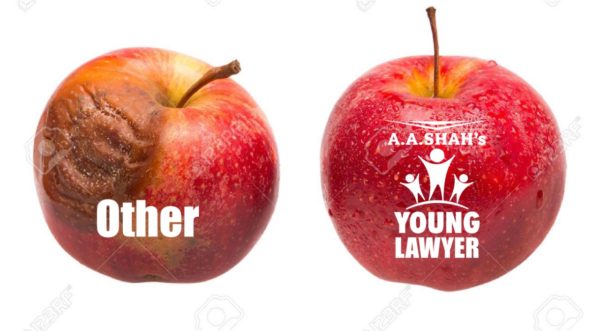
I am interested in Law Entrance Courses
Previous Years Papers
CLAT 2019
CLAT 2018
CLAT 2017
CLAT 2016
CLAT 2015
CLAT 2014
Subscribe now our Youtube channel
http://www.youtube.com/c/YoungIAS?sub…
for FREE Daily Live interactive discussion & explanation on Legal Reasoning, Logical Reasoning, Mathematics, General Knowledge / Current Affairs.

Register now for FREE Lectures/ Tests / Guidance
https://www.youngias.com/register-for-free-lectures-tests-guidance/
For further details of CLAT 2020 click: https://www.youngias.com/about-clat-2020/
For CLAT Notification, detailed syllabus click: https://www.youngias.com/clat-notification-2/

